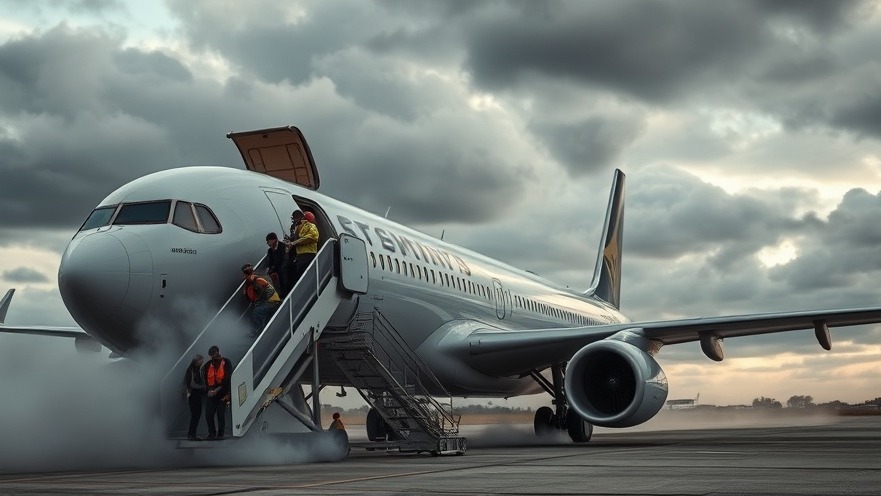
Aircraft Emergency at Denver International Airport: What Happened?
On July 26, 2025, a harrowing incident at Denver International Airport (DEN) forced the evacuation of an American Airlines flight headed for Miami. During takeoff, American Airlines Flight AA3023 encountered a serious issue with its landing gear, leading to a quick and coordinated response from airport safety officials.
The aircraft, a Boeing 737 MAX 8, was on runway 34L when the incident occurred, sending smoke billowing from below the rear of the plane. Despite the concerning circumstances, the evacuation of all 173 passengers and six crew members was executed successfully. Evacuating via emergency slides, everyone exited the aircraft safely. Five individuals received on-site evaluations, while one minor injury case required further medical attention, underscoring the potential dangers that could accompany air travel.
Understanding Aircraft Safety Protocols
These events highlight the rigorous safety protocols in place at major airports like DEN. The quick response by the Denver Fire Department and airport staff exemplifies the preparedness that airlines and airports uphold to ensure passenger safety. Following the incident, American Airlines confirmed that a maintenance issue related to a tire led to the aircraft being grounded for further inspection, reinforcing the importance of maintenance checks before flights.
Impact on Airport Operations
Following the incident, the airport quickly implemented a ground stop affecting incoming flights to ensure the safety of all personnel and passengers. Notably, this incident resulted in the delay of 87 flights from 2 p.m., with operations returning to normal shortly after 3 p.m. The event not only disrupted travel plans but also drew attention to the constant challenges aviation faces in maintaining safety standards.
Passenger Experience and Safety
For the passengers involved, the evacuation was understandably alarming. Video footage shared on social media captured the scene, wherein travelers hurried onto the emergency slides as smoke emerged from the aircraft's underside. Although no severe injuries were reported, the emotional toll of the experience can be significant. Passengers often carry both physical and emotional burdens following such incidents, which can range from PTSD to anxiety regarding future travel.
Looking Ahead: Airport Safety and the Future
As investigations by the Federal Aviation Administration (FAA) continue into the incident, it prompts a crucial conversation about enhancing safety protocols in air travel. In the aviation industry, knowledge and proactive measures are paramount in avoiding such crises. Trends suggest that airlines may increasingly turn to advanced technology and routine audits to uncover potential maintenance issues before they escalate.
What Can Passengers Learn?
Travelers can benefit from understanding emergency procedures and remaining calm during incidents. Familiarity with safety demonstrations given before flights can be invaluable during emergencies. As air travel continues to be one of the safest modes of transport, knowing how to react in an emergency enhances passenger safety.
Conclusion: Taking Action for a Safer Travel Experience
In light of the recent events at Denver International Airport, it is essential for passengers to stay informed about their rights and the protocols in place for their safety. As air travel remains a significant part of modern society, collective efforts from airlines, airports, and passengers will continue to ensure that safety remains a top priority. Paying attention to safety briefings and advocating for any concerns with airlines can help maintain high standards within the industry. The affected passengers of Flight AA3023 will be provided with a replacement flight to Miami, but the experiences of evacuation and fear linger beyond the airport.
As this incident serves as a reminder, the community, airlines, and travelers must all play a part in enhancing safety and preparedness for future flights.
 Add Element
Add Element  Add Row
Add Row 



Write A Comment